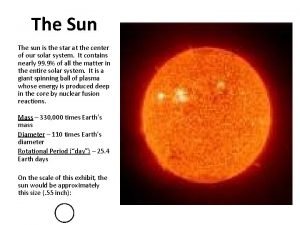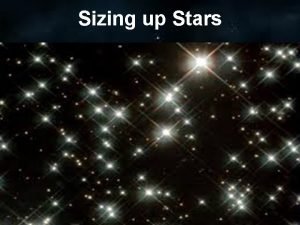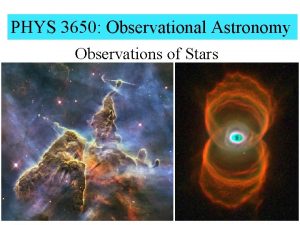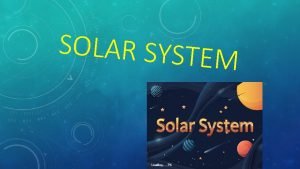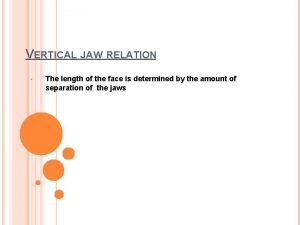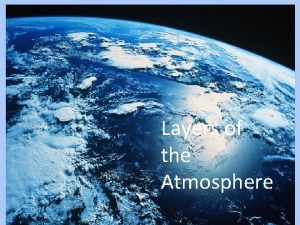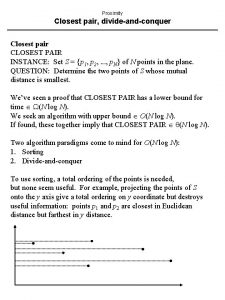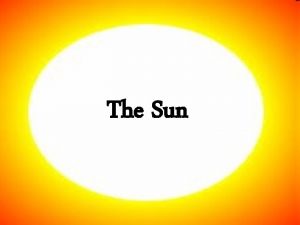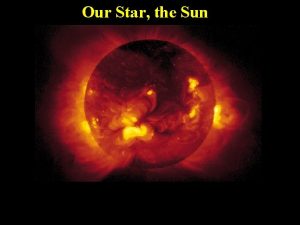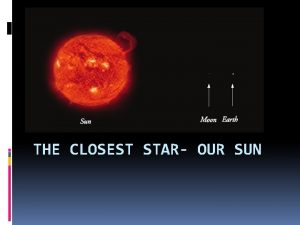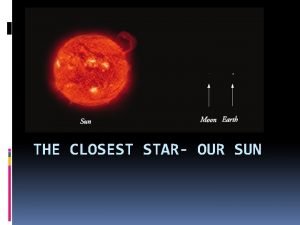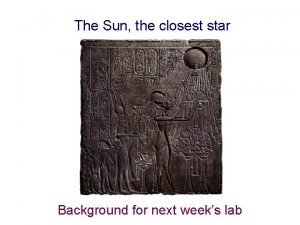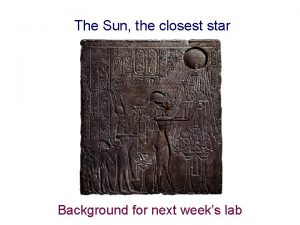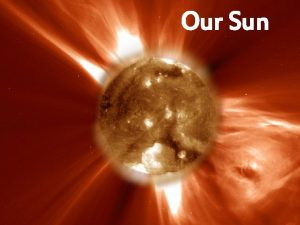The Closest Star Our Sun History of Our











- Slides: 11

The Closest Star- Our Sun

History of Our Sun • Worshipped as a deity (god) by many cultures throughout history • Called Helios by the Greeks • Called Ra by the Egyptians Ra, the god of the Sun Helios, Greek god carrying the Sun to its position in the sky

Why is the Sun important? • Supports life on earth by providing the temperature required for survival • Radiation- the transfer of thermal energy by electromagnetic waves. • Allows plants to grow via photosynthesis which in turn absorbs carbon dioxide and creates oxygen

How does the Sun produce light and heat? • Fusion occurs in the core of the Sun, where the pressure and temperature are extremely high. • Fusion is the combination of lightweight, atomic nuclei into heavier nuclei. • Fission is the opposite, which is the splitting of heavy atomic nuclei into smaller, lighter nuclei, like uranium into lead.

How does the Sun produce light and heat? • Deep in the sun's core, nuclear fusion reactions convert hydrogen to helium, which generates energy. • During fusion, hydrogen atoms are fused together to create a helium and release a tremendous amount of energy

Features of the Sun – Solar Flares • Solar flare- a sudden and intense variation in brightness from a magnetic energy build up • IMPACT: radiation from past solar flares has been responsible for; • disrupting satellites • causing electronics and cellular devices to fail • causing telephone wires to burst into flames.

Features of the Sun – Solar Winds • Solar Winds- plasma flows outward from the corona at high speeds. • This wind of charged particles, called ions, flows towards all of the planets. • The ions are deflected by Earth’s magnetic field and trapped in two huge rings located at each of the Earth’s poles. • The high-energy particles in these belts collide with gases in the Earth’s atmosphere and cause the gases to give off light.

Features of the Sun – Solar Winds This light, called the aurora, can be seen from Earth or from space.

Outer Layers of the Sun 1. ) Photosphere: star’s outer shell in which light is radiated 2. ) Chromosphere: “sphere of color” next layer above the photosphere 3. ) Corona: “crown” of light from the Sun

Features of the Sun – Prominence • Prominences are arcs of gas that are anchored in the photosphere layer of the Sun • Prominences extend through the corona layer of the Sun

Features of the Sun – Sunspots • small, dark spots seen on the surface of the Sun • Sunspots are caused by strong magnetic fields on the Sun’s surface • One sunspot has North magnetic polarity and one sunspot has South magnetic polarity. • Caused by the Sun’s rotation
 Bearing gifts we traverse afar
Bearing gifts we traverse afar A* vs ao* algorithm
A* vs ao* algorithm What does star in star events stand for
What does star in star events stand for Distance from the sun saturn
Distance from the sun saturn Coolest to hottest star colors
Coolest to hottest star colors Scale sun compared to other stars
Scale sun compared to other stars What does the sun made of
What does the sun made of Vertical jaw relation at rest
Vertical jaw relation at rest Closest speaking space
Closest speaking space What does the mesosphere
What does the mesosphere Closest african country to europe
Closest african country to europe Closest companions of prophet muhammad
Closest companions of prophet muhammad



